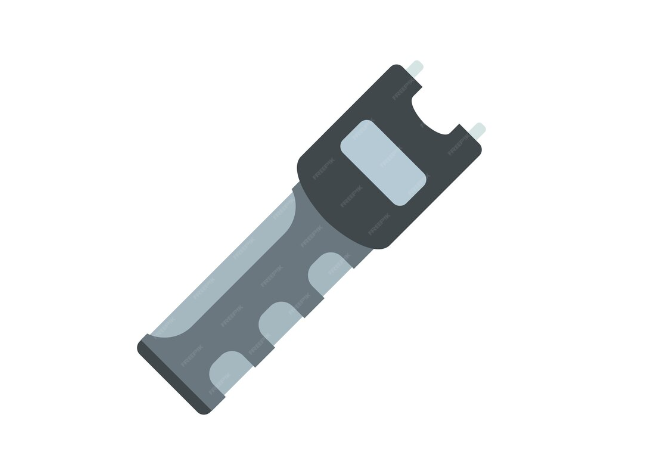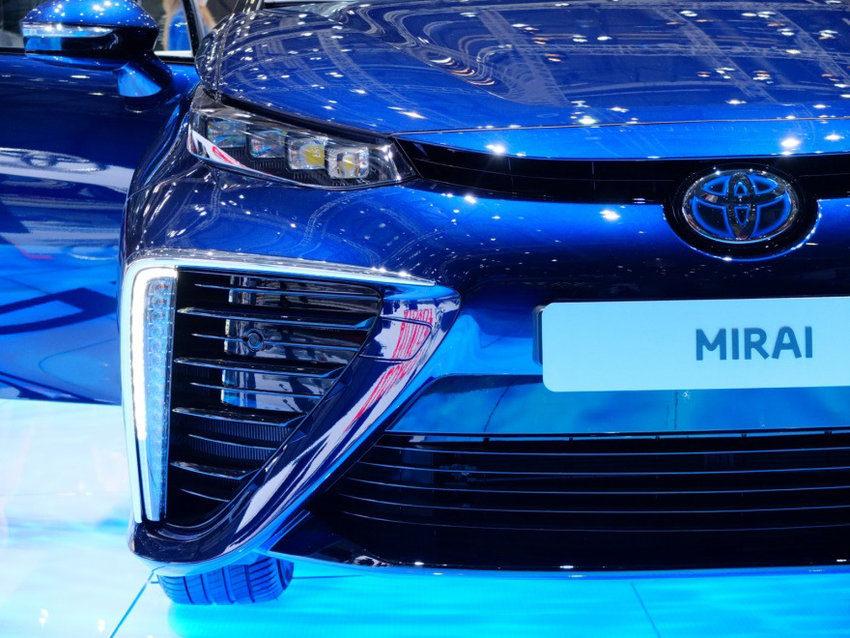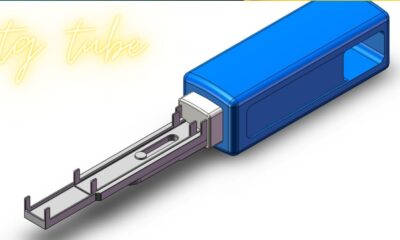Technology
Honda Stepwagon USA: Unlocking the Excitement of Japanese

Introduction
When it comes to multipurpose minivans, the Honda Stepwagon stands out for its exceptional combination of good looks, power, and practicality. Discover the fascinating world of the honda stepwagon usa in the United States in this in-depth essay that covers its background, specs, user reviews, and more.
History of Honda Stepwagon
Origin and Evolution
The Honda Stepwagon story begins from the beginning, with the original concept and continuing through the years of progressive design. In this part, the history of its evolution is laid out, starting with the initial model and ending with the present day, with important landmarks highlighted.
Features and Specifications
Engine Performance
The Honda Stepwagon has a powerful engine that can handle a lot of ground. This section explains how its performance is defined by its power and efficiency, which makes it an attractive option for people who want a good mix of the two.
Interior Design and Comfort
The instant you step inside the Honda Stepwagon, you’ll feel like you’ve entered a haven of modern convenience. This chapter delves into the design elements that provide an unparalleled driving experience, including spacious interiors and state-of-the-art technological systems.
Why Honda Stepwagon in the USA?
Market Trends and Demand
It seems like the Honda Stepwagon has finally found its place in the American car market. This part explains why the Stepwagon is so popular among American drivers by analysing present market dynamics and customer expectations.
Unique Selling Points
In comparison to its rivals, what makes the Honda Stepwagon special? Find out why it’s the best option for families and individuals with its unique features and benefits.
Honda Stepwagon Models in the USA
Available Trims and Variants
Potential customers have their work cut out for them when faced with the menu of available trims and variations. Insights on the available models are provided in this area to assist purchasers make educated judgements.
Popular Customizations
Many customers place a premium on personalization. Check out the most common ways that Honda Stepwagon owners modify their vehicles, whether it’s for looks or functionality.
Customer Reviews and Experiences
Positive Feedback
What do Honda Stepwagon owners have to say about their vehicle? Providing real-world views on ownership, delve into the positive opinions and experiences offered by happy consumers.
Challenges and Common Concerns
There are problems with every car. Offering a fair assessment to prospective purchasers requires addressing typical issues and problems encountered by owners.
Maintenance and Ownership Costs
Long-Term Reliability
Car ownership requires dedication over the long haul. Find out why the Honda Stepwagon is a dependable option and evaluate its long-term durability.
Affordable Ownership Experience
This section details the ongoing expenses of owning a Honda Stepwagon, going beyond the original purchase price, demonstrating how affordable it is.
Honda Stepwagon Community in the USA
Enthusiast Groups
Being a part of a community enhances the feeling of ownership even more. Learn about and join networks of like-minded individuals who are passionate about Honda Stepwagons.
Events and Gatherings
Learn about the many activities that unite Honda Stepwagon fans and foster a thriving community, from formal gatherings to more informal get-togethers.
Tips for Buying a Honda Stepwagon in the USA
Research and Inspection
Research and examination should be done thoroughly before a purchase is made. To help prospective customers make an informed choice, this section includes helpful hints.
Financing Options
To make buying a Honda Stepwagon easier and more accessible, look into financing alternatives designed just for those customers.
Dealership Recommendations
Every car lot is different. Locate suggestions for trustworthy car lots that have a stellar reputation for honesty and happy customers.
Future Prospects of Honda Stepwagon in the USA
Anticipated Upgrades
Where does Honda Stepwagon go from here in the US? Find out what changes and improvements might be in store for this popular minivan in the future.
Growing Popularity and Market Expansion
This section delves into the possible market expansions and the impact of the Honda Stepwagon on the minivan industry in the United States, given the vehicle’s rising popularity.
Conclusion
Finally, for anyone looking for a minivan that blends style, performance, and comfort, the Honda Stepwagon is a great option. Whether you’re a die-hard fan or just want to learn more, this page has covered all the bases when it comes to the American Honda Stepwagon.
(FAQs)
How fuel-efficient is the Honda Stepwagon?
People concerned about their carbon footprint and petrol budget will find the Honda Stepwagon to be an attractive option because to its high fuel economy.
Are there any known issues with specific models?
Even though Honda Stepwagons are usually dependable, it’s important to be aware of any concerns that are particular to your model. Having a worry-free ownership experience is possible with regular maintenance and quick problem-solving.In comparison to other brands,
What makes Honda Stepwagon stand out in the market?
Thanks to its one-of-a-kind blend of fashionable style, cutting-edge technologies, and practicality, the Honda Stepwagon stands apart. Anyone looking for more than a standard minivan will find it appealing.
How does the cost of ownership compare to other minivans?
Taking into account its features and dependability, the Honda Stepwagon provides a fair cost of ownership. For a tailored evaluation, it’s wise to compare certain models and their ownership expenses.
Where can I find reliable information about Honda Stepwagon models?
The official Honda stores, car review websites, and Stepwagon enthusiast forums are good places to find accurate information regarding Honda Stepwagon vehicles.
How To
Taser High Voltage: Understanding its Mechanism and Impact

Introduction
The Taser, an acronym for “Thomas A. Swift’s Electric Rifle,” has become synonymous with non-lethal law enforcement. One of its key components is high voltage, a critical factor influencing its effectiveness and safety. This article delves into the specifics of Taser high voltage, its function, impact, and safety considerations.
What is a Taser?
Taser devices are electroshock weapons that use electrical currents to disrupt voluntary control of muscles, causing neuromuscular incapacitation. They’re widely employed by law enforcement to subdue suspects without causing significant harm.
Components of a Taser
- High Voltage Module:
- The heart of a Taser is its high voltage module, generating electrical pulses.
- Voltage typically ranges from 50,000 to 150,000 volts in most commercial Tasers.
- Despite the high voltage, the amperage—the actual current—is low, reducing the risk of causing lethal harm.
- Power Source:
- Tasers use lithium batteries or replaceable cartridges to power the high voltage module.
How Does Taser High Voltage Work?
- Electrostatic Discharge:
- When activated, the Taser releases two probes connected by wires.
- These probes deliver high-voltage, low-current electrical pulses, creating an arc of electricity.
- Neuromuscular Incapacitation:
- The electrical pulses disrupt the body’s normal electrical signals, causing involuntary muscle contractions.
- This disrupts neuromuscular control, leading to temporary incapacitation.
Impact on the Human Body
- Pain and Discomfort:
- Taser activation causes severe pain and discomfort due to intense muscle contractions.
- However, once the Taser is deactivated, the effects are usually short-lived.
- Potential Risks:
- While Tasers are generally considered non-lethal, there have been instances of complications, especially in individuals with pre-existing heart conditions.
- Medical experts advise caution when using Tasers, particularly on vulnerable populations.
Safety Considerations and Regulations
- Law Enforcement Guidelines:
- Law enforcement agencies often have strict protocols on Taser usage.
- Guidelines emphasize using Tasers as a last resort and avoiding prolonged or repeated shocks.
- Training and Education:
- Proper training on Taser use is crucial for law enforcement officers to minimize risks.
- This includes understanding the physiological effects and recognizing situations where Taser use is appropriate.
Misconceptions Surrounding Taser High Voltage
- Lethality vs. Non-Lethality:
- Despite high voltage, Tasers are designed to be non-lethal due to their low amperage.
- However, misuse or application on vulnerable areas can lead to adverse outcomes.
- Long-Term Health Effects:
- Studies on the long-term effects of Taser high voltage on human health are inconclusive.
- Continued research is necessary to understand any potential long-term implications.
Conclusion
Taser high voltage plays a pivotal role in the functioning of these electroshock weapons, offering law enforcement a non-lethal means of incapacitating suspects. While generally considered safe when used correctly, caution and adherence to guidelines are essential to mitigate potential risks. Understanding the mechanism and impact of Taser high voltage is crucial for ensuring its responsible and effective usage in law enforcement scenarios.
FAQS:
Technology
Driving into the Future: Mitsubishi Motors’ Hybrid Revolution

Embracing the Future: Mitsubishi Motors
In today’s rapidly evolving automotive landscape, the quest for eco-friendly and efficient transportation solutions has gained significant momentum. Mitsubishi Motors, a pioneer in automotive technology, has been at the forefront of this movement with its innovative hybrid vehicles. This article explores the essence of Mitsubishi Motors’ hybrid technology, its advantages, models, and the future prospects of these groundbreaking vehicles.
Understanding Mitsubishi Motors’ Hybrid Technology
Mitsubishi Motors’ hybrid vehicles integrate advanced technologies that merge internal combustion engines with electric power. Their hybrid system operates through a combination of a gasoline engine and electric motors, working in tandem to optimize fuel efficiency and reduce emissions.
The Powertrain: A Harmonious Blend
The powertrain of Mitsubishi Motors’ hybrids comprises a gasoline engine and an electric motor powered by a high-capacity battery. This synergy allows for seamless transitions between electric and gasoline power, ensuring optimal performance while minimizing environmental impact.
Regenerative Braking: Harnessing Energy
A key feature of Mitsubishi’s hybrid technology is regenerative braking, which converts kinetic energy produced during braking into electrical energy. This recycled energy recharges the battery, enhancing overall efficiency and range.
Advantages of Mitsubishi Motors Hybrid Vehicles
Mitsubishi Motors’ commitment to eco-friendly innovation results in several compelling advantages for hybrid vehicle owners.
Fuel Efficiency and Reduced Emissions
The integration of electric power significantly enhances fuel efficiency, reducing reliance on gasoline and subsequently lowering emissions. This eco-conscious approach aligns with the global pursuit of sustainable transportation.
Enhanced Driving Experience
The hybrid technology in Mitsubishi vehicles offers a smooth and quiet driving experience. The electric power component provides instant torque, delivering impress9ive acceleration and a serene driving environment.
Environmental Sustainability
By reducing the carbon footprint through decreased emissions, Mitsubishi Motors’ hybrids contribute to preserving the environment. The company’s dedication to sustainability extends beyond individual vehicles, aiming to create a more eco-friendly automotive industry.
Mitsubishi Motors Hybrid Models
Mitsubishi Motors has introduced several hybrid models, each showcasing the brand’s dedication to innovation and sustainability.
Outlander PHEV: Pioneering Excellence
The Outlander Plug-in Hybrid Electric Vehicle (PHEV) stands as a testament to Mitsubishi’s commitment to cutting-edge hybrid technology. With its versatile capabilities and eco-friendly design, the Outlander PHEV has carved a niche in the hybrid SUV segment.
Eclipse Cross PHEV: Blending Style and Efficiency
The Eclipse Cross Plug-in Hybrid Electric Vehicle combines sleek design with efficient hybrid technology. This crossover offers a dynamic driving experience while prioritizing fuel efficiency and low emissions.
The Future of Mitsubishi Motors Hybrid Technology
Looking ahead, Mitsubishi Motors continues to invest in research and development to enhance its hybrid technology further. The company aims to expand its hybrid lineup, introducing innovative features and improving overall performance and efficiency.
Conclusion: Driving Towards a Sustainable Future
Mitsubishi Motors’ commitment to hybrid technology reflects its dedication to sustainable transportation solutions. Through continuous innovation, the company strives to redefine the automotive industry’s landscape, offering eco-friendly vehicles without compromising performance or style.
In conclusion, Mitsubishi Motors’ hybrid vehicles stand as a beacon of innovation, blending cutting-edge technology with a commitment to environmental responsibility. As the automotive industry progresses towards a greener future, Mitsubishi Motors remains a frontrunner in pioneering hybrid excellence.
FAQS:
Lifestyle
Unveiling the Toyota Mirai: Pioneering the Future of Green Mobility

Introduction:
The Toyota Mirai stands as a testament to innovation in the automotive industry, heralding a new era of eco-friendly transportation. This article delves into the intricacies of the Toyota Mirai, exploring its revolutionary technology, environmental impact, driving experience, and its role in shaping the future of mobility.
Genesis of the Toyota Mirai
The Toyota Mirai, which means “future” in Japanese, made its debut in 2014, marking Toyota’s foray into hydrogen fuel cell technology. It stemmed from Toyota’s commitment to developing sustainable transportation solutions, aiming to reduce carbon emissions and dependence on fossil fuels.
Revolutionary Hydrogen Fuel Cell Technology
-
Fuel Cell Powertrain:
At the heart of the Mirai lies its fuel cell stack, which converts hydrogen into electricity through an electrochemical process. This generates power to propel the vehicle, emitting only water vapor as a byproduct, making it a zero-emission vehicle.
-
Efficiency and Performance:
The Mirai’s fuel cell technology offers impressive efficiency and performance, providing a driving range of approximately 400 miles on a full tank of hydrogen, coupled with quick refueling times.
Environmental Impact
-
Zero Emissions:
Unlike conventional internal combustion engine vehicles, the Mirai produces zero tailpipe emissions, significantly reducing greenhouse gas emissions and combating air pollution.
-
Sustainable Fuel Source:
Hydrogen, the fuel used in the Mirai, can be produced from various renewable sources, such as solar or wind energy, contributing to a more sustainable energy ecosystem.
Driving the Future: User Experience
-
Silent Operation:
The Mirai delivers a quiet and smooth driving experience, characteristic of electric vehicles, owing to its lack of a traditional combustion engine.
-
Advanced Features:
Equipped with state-of-the-art technology and safety features, the Mirai offers a comfortable and futuristic driving experience, blending performance with sustainability.
Infrastructure Challenges and Expansion
-
Challenges in Infrastructure:
Despite its potential, the widespread adoption of hydrogen fuel cell vehicles faces challenges related to the establishment of a robust hydrogen infrastructure, including refueling stations.
-
Global Expansion Efforts:
Toyota and other stakeholders are actively working to expand hydrogen infrastructure globally, promoting. The adoption of fuel cell vehicles like the Mirai.
Toyota Mirai: Shaping the Future of Mobility
-
Impact on the Automotive Industry:
The Mirai serves as a catalyst for innovation, inspiring other manufacturers to explore hydrogen fuel cell. Technology and invest in sustainable transportation solutions.
-
Contributing to a Greener Future:
By pioneering hydrogen fuel cell technology. The Mirai contributes to the transition towards a more sustainable and eco-conscious automotive industry, reducing carbon footprints and environmental impact.
Conclusion:
FAQS:
1. What is the fuel source for the Toyota Mirai, and how does its hydrogen fuel cell technology work?
The Toyota Mirai utilizes hydrogen as its fuel source, which undergoes a process in the fuel cell stack. This stack converts hydrogen into electricity through an electrochemical reaction, generating power to propel the vehicle. The result is a clean and efficient energy conversion that produces only water vapor as a byproduct.
2. How does the Toyota Mirai contribute to environmental sustainability?
The Toyota Mirai significantly contributes to environmental sustainability by producing zero tailpipe emissions. As a hydrogen fuel cell vehicle, it eliminates the release of harmful pollutants associated with traditional combustion engines. Additionally, the Mirai promotes a more sustainable energy ecosystem since hydrogen, its fuel source, can be produced from renewable sources, such as solar or wind energy.
3. What challenges does the Toyota Mirai face in terms of infrastructure, and how is Toyota addressing them?
One challenge facing the widespread adoption of the Toyota Mirai is the establishment of a robust hydrogen infrastructure, including the development of refueling stations. Toyota, along with other stakeholders, is actively working towards addressing this challenge through global expansion efforts. These initiatives aim to create a network of hydrogen refueling stations, supporting the growth of hydrogen fuel cell vehicles like the Mirai.
-

 Technology7 months ago
Technology7 months agoKooraLive English: Guide to Live Sports Streaming
-

 Technology7 months ago
Technology7 months agoSSIS 816 Revolutionizing Data Integration
-

 Health7 months ago
Health7 months agoOptimizing Health: The Comprehensive Guide to TG Tubes
-

 Lifestyle6 months ago
Lifestyle6 months agothe Charm of Villages: Decoding the Loofa Code
-

 Entertainment6 months ago
Entertainment6 months agothe Mystery: packgod face reveal
-

 Business4 months ago
Business4 months agoSimplifying Work Life: NetchexOnline Employee Login
-

 Technology7 months ago
Technology7 months agoPotential of Pixwox: Your Guide to Superior Visual Content
-

 Technology7 months ago
Technology7 months agoThe Power of Innocams
